
The following resources are used by FoodCorps AmeriCorps service members across the nation while they lead hands-on food education in schools. We are excited to share these resources and tools to support schools, families, and community partners who join us in promoting healthy school food environments. These resources have been developed by FoodCorps and are made available to the public for free, but are not for commercial use. Credit should be given to FoodCorps if any material is used or adapted. If you’re a FoodCorps service member or FoodCorps site partner, you can log into the Toolshed to access more FoodCorps-specific resources.
FoodCorps Resources
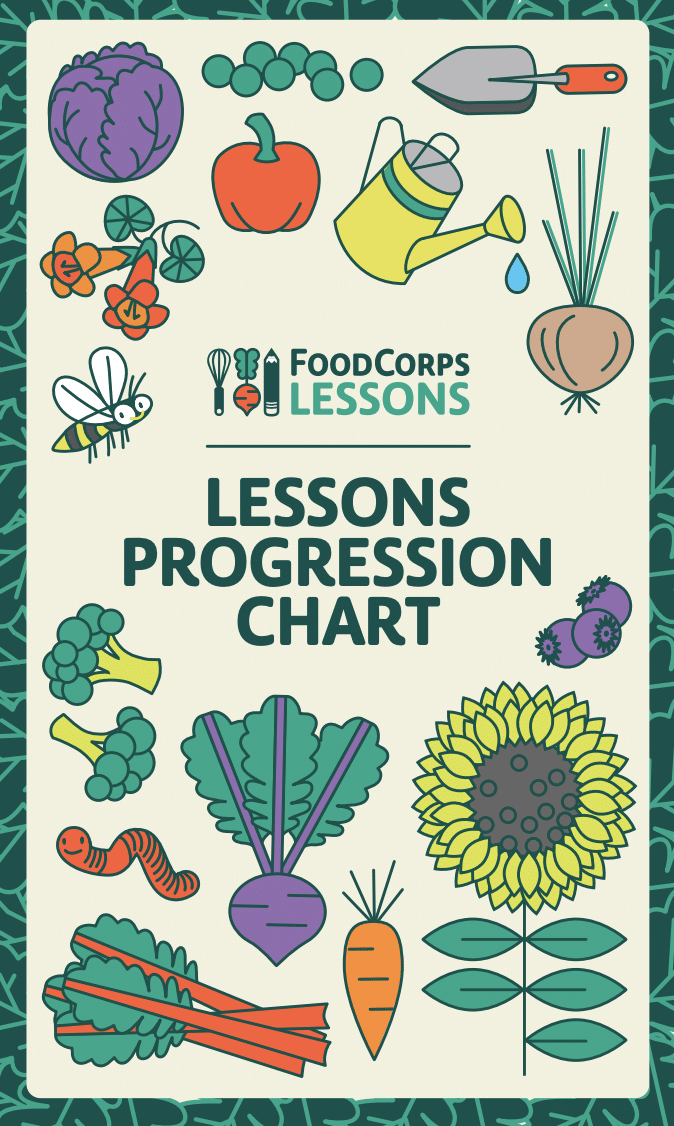
FOODCORPS LESSONS
The FoodCorps Lessons include hands-on experiential activities to engage kids in learning about healthy food. This suite of 96 lessons are for grades K-5, and are organized through this learning progression by grade, season and theme. The lessons are tied to national academic standards and were developed following Culturally Responsive Teaching, Place Based Learning and Social and Emotional Learning best practices and frameworks. Each lesson was developed with input from FoodCorps service members, community partners and resource specialists, and have been evaluated and updated to reflect recommendations from our community of food educators. This suite of lessons is intended to guide food and garden educators to spark inquiry and love for healthy food and should be adapted to reflect the needs, identity and culture of the community in which they are taught.

FOODCORPS PROGRAM GUIDE
The FoodCorps Program Guide is a set of resources for FoodCorps service members, designed to support effective FoodCorps programming in schools. Service members use this guide alongside FoodCorps’ in-person trainings. In this guide, you will find the following:
- Resources for planning and evaluating your service
- Tips for getting to know your school community
- Teaching approaches and considerations
- Best practices in classroom management
- Tips for cooking with students
- Tips for building and maintaining school gardens
- Activities to engage students in the cafeteria
- Best practices for safety during hands-on activities

HEALTHY SCHOOL TOOLKIT (English and Español)
FoodCorps’ Healthy School Toolkit is a set of resources designed to:
-
Take a snapshot of your current school food environment.
-
Guide your school community in creating a vision for the future.
-
Document your action plan for working toward that vision.
-
Evaluate and celebrate your school community’s history and progress over time.
Note that this toolkit was originally designed for FoodCorps AmeriCorps service members working in partnership with schools. It has been adapted for a broader audience.

FOODCORPS TASTE TEST GUIDE
The FoodCorps Taste Test Guide supports FoodCorps service members in leading taste tests in schools. It includes key considerations when planning and leading a taste test, such as utilizing volunteers and connecting with school nutrition staff. Topics also include tips for choosing recipes, methods to engage students in taste test voting, and utilizing taste test results.
The Guide features 27 recipes that highlight 8 products: carrots, corn, broccoli, potatoes, sweet potatoes, kale, apples, and sweet peppers. These recipes have been developed to feature fruits and vegetables available in multiple regions, in various seasons, that could be grown in a school garden or are fairly affordable if purchased by local farmers. The recipes section of the Guide includes “Educator,” “Cafeteria,” and “Home” handouts that feature fun facts, nutritional benefits, and produce variety information.
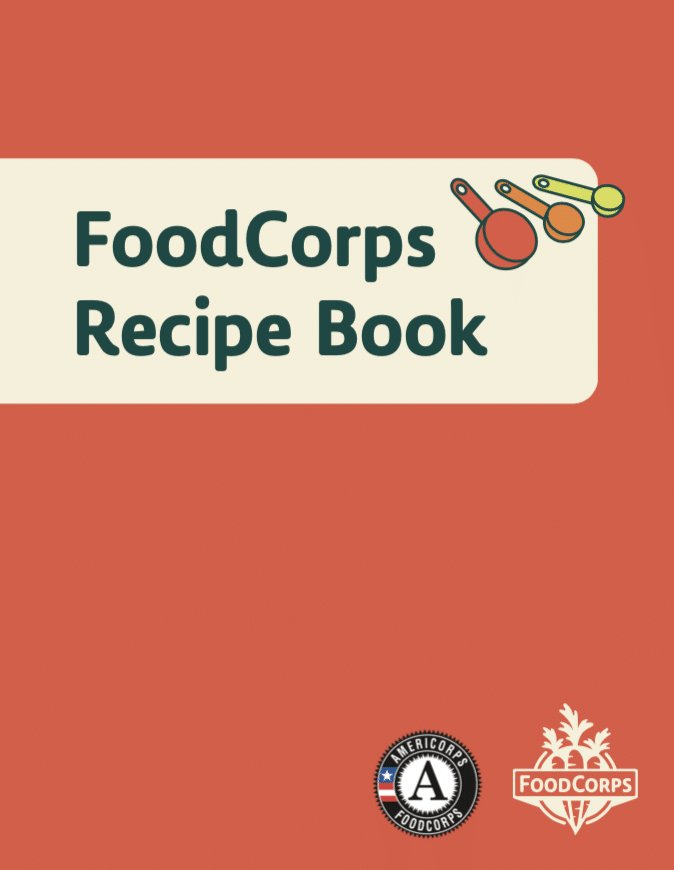
FOODCORPS RECIPE BOOK
The FoodCorps Recipe Book is a compilation of 55 recipes that can be used for school-wide taste tastes, or during hands-on learning in the classroom or garden. The resource includes an overview of the basics of cooking with kids, cooking safety, and an overview of learning models that inform FoodCorps’ approach to hands-on learning. Recipes were developed to feature seasonal products available across the country during the school year (fall to spring), national growing and harvest timing for produce featured in each recipe, what would be available to purchase from local farmers and/or grown in school gardens, produce commonly featured in school food, and produce that is affordable and accessible for families and service members, if purchased.
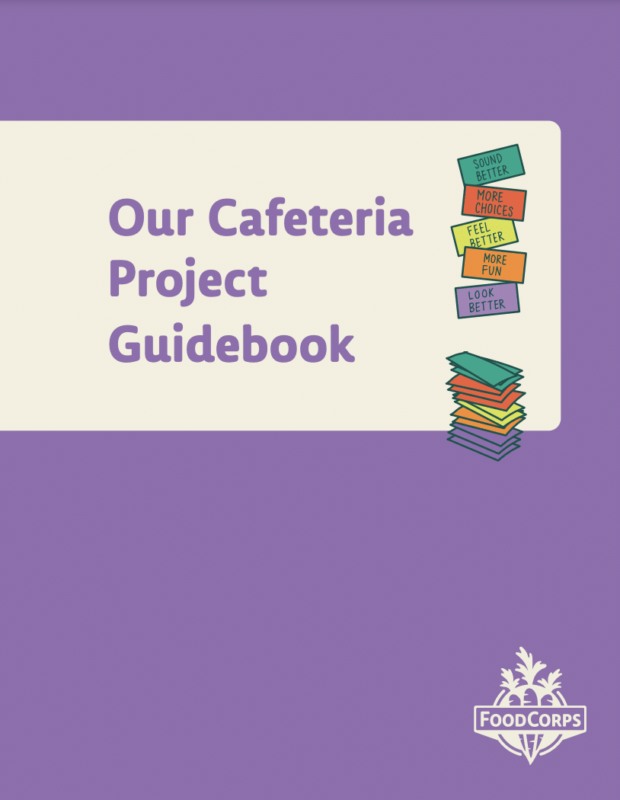
Our Cafeteria Project
Our Cafeteria Project centers around the central question of “How can we improve our school cafeteria?” The program uses a project-based learning framework to outline a process for students to lead discussions and decisions within a school and with school leaders on how to improve the cafeteria environment and mealtime experience. During the program, an educator meets regularly with a small group of student leaders to examine what students currently like about their cafeteria and what they would change. This group of students facilitates activities with the greater student body to generate ideas for a project centered on making change in the cafeteria. Projects could range from a mural in the cafeteria to “free-sit Fridays.” Adult stakeholders and decision makers are consulted throughout the project, yet the project emphasizes involving student voice in critical decisions and supporting student choice. The program culminates with the student group and school working collaboratively to make the cafeteria project a reality, then celebrating the process and goals they achieved.
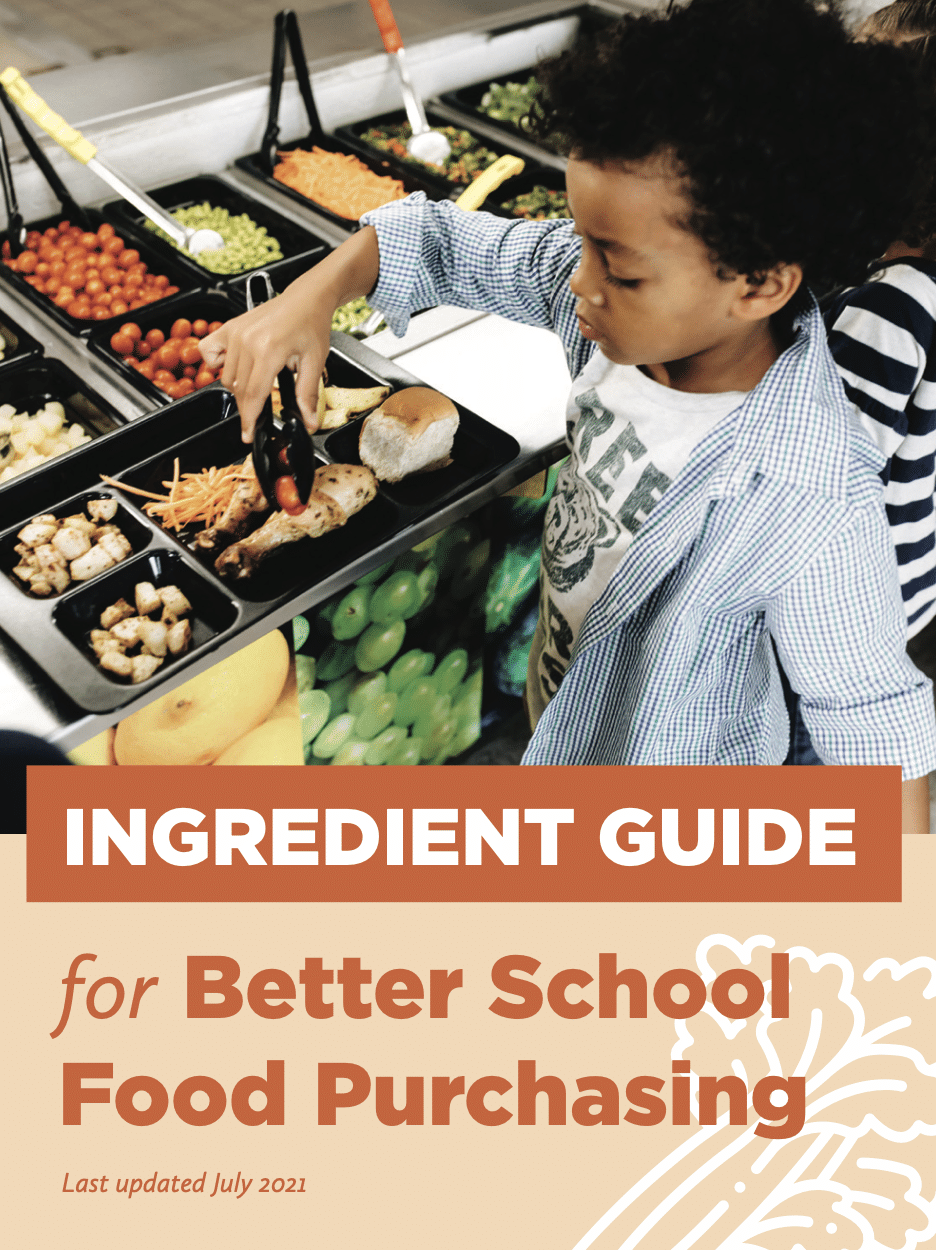
Ingredient Guide for Better School Food Purchasing
This guide is a science-based tool created primarily by school nutrition professionals, for school nutrition professionals, in partnership with Center for Science in the Public Interest. It is a resource for school food leaders and manufacturers alike who are committed to improving the overall quality, nutritional value, and safety of food provided to all students in every school. A guiding principle behind the development of this document is that our nation’s school nutrition professionals should be empowered to choose what works best for their school food programs according to the unique needs of their community.

SPROUT SCOUTS
Sprout Scouts is a club for elementary-aged students that helps kids learn what healthy food is, care where it comes from, and eat it every day. Through fun, hands-on activities, Sprout Scouts clubs teach kids how to grow, prepare, and eat healthy food. Sprout Scouts Adventures and activities link Common Core and other academic standards to food and health in fun and engaging ways. Because of this, Sprout Scouts clubs are perfect for after-school programs, summer camps, or even as a classroom unit. Sprout Scouts was developed in collaboration with Life Lab.
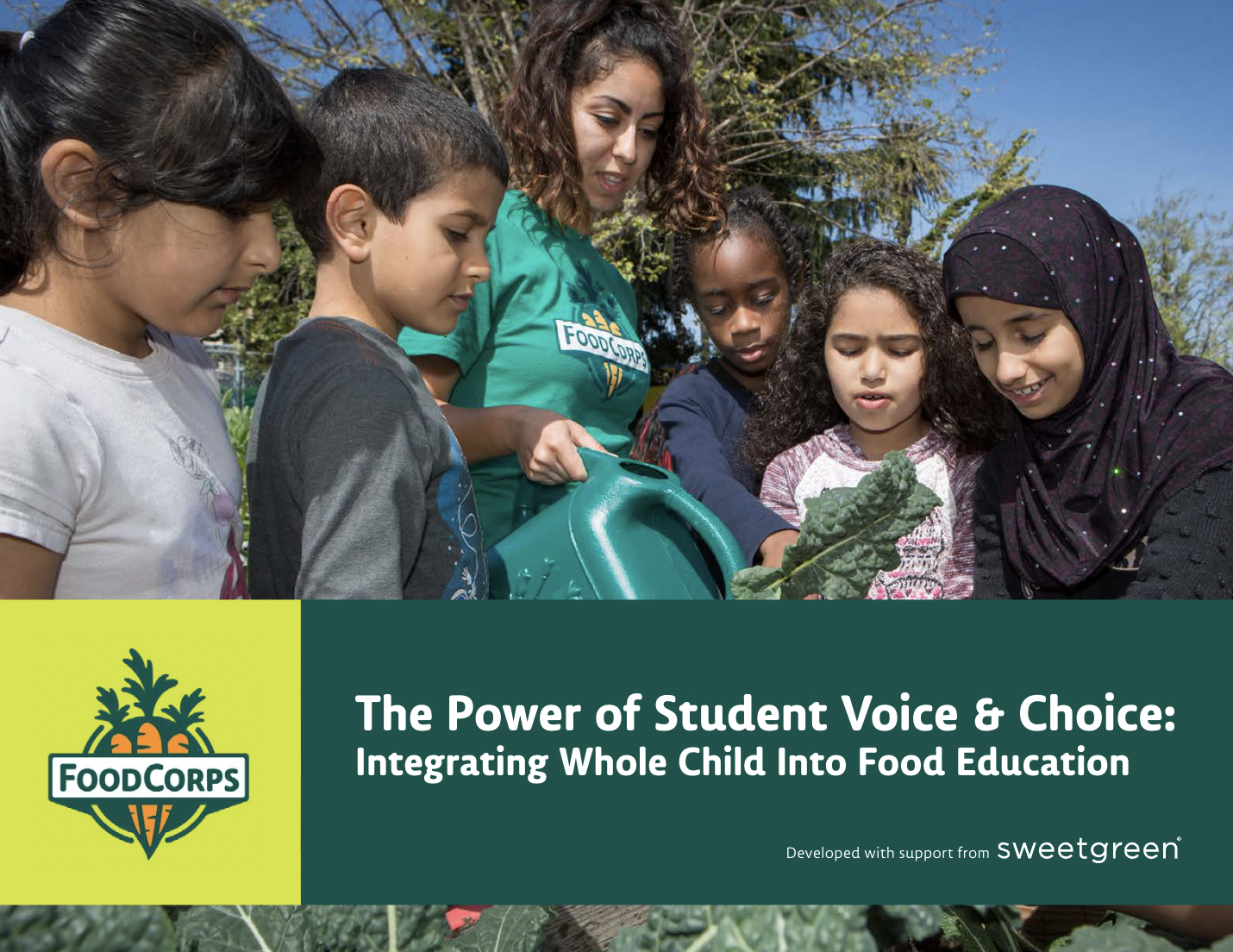
FOODCORPS ACTION BRIEF
FoodCorps believes that in the aftermath of learnings from the COVID-19 pandemic, we are in a key moment to ground K-12 education in human development. We believe this is possible by taking a whole child approach to learning that accounts for the many different ways in which young people grow and thrive. This brief is primarily intended for anyone working with students in a school environment—particularly in the classroom, garden, and cafeteria—to better understand the role of student agency and whole child perspectives in food and nutrition education.
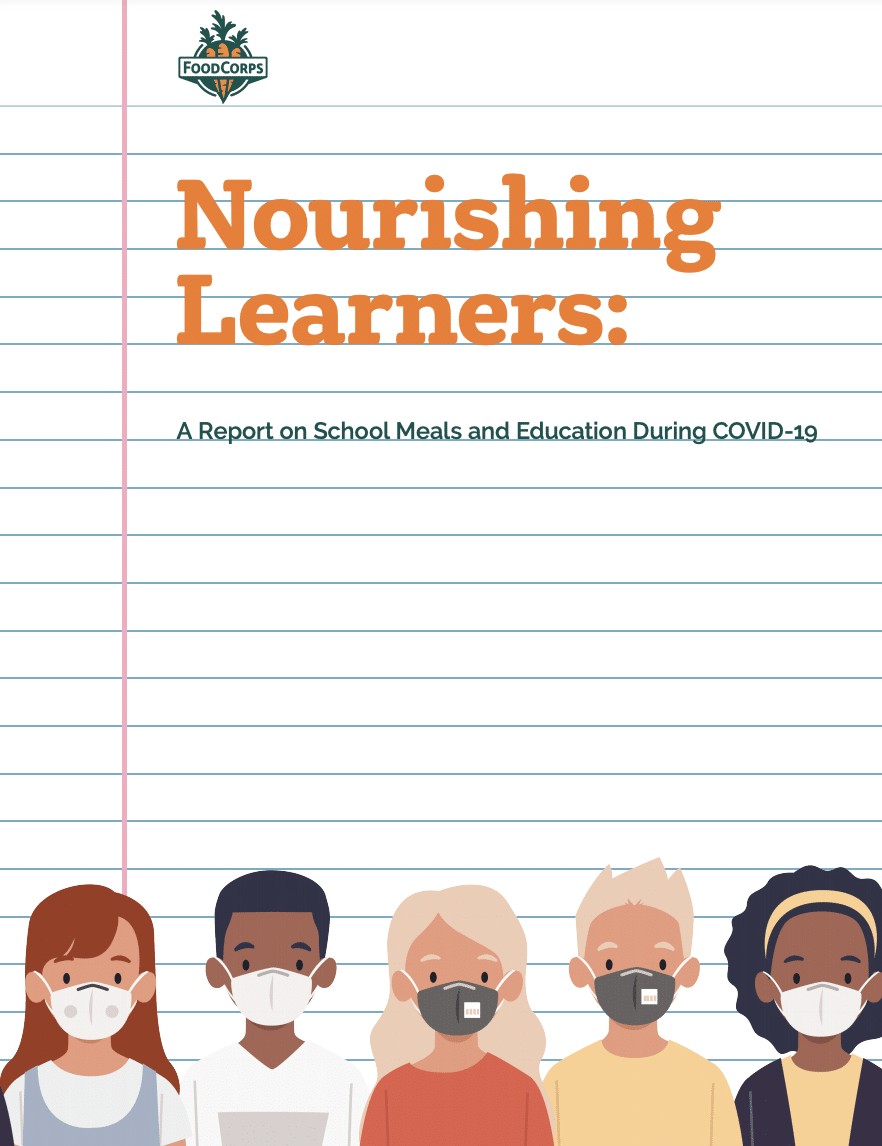
NOURISHING LEARNERS REPORT
During the school closures of the 2020-2021 school year, FoodCorps set out to learn how districts and school nutrition leaders were working together to feed and teach students amid COVID-19. This report reveals both the silver linings and the pain points of the challenges schools faced, and it shares opportunities to strengthen food in schools as children return to school in person. We hope that school districts and the organizations who support them will use this report to have conversations and work toward building a new normal together. To learn more about the report and download the accessible version, visit the Nourishing Learners page.
Resources From Our Partners

EDUCATION OUTSIDE RESOURCES
Education Outside was a nonprofit committed to advancing science education in public schools, outdoors. Though Education Outside closed its doors in 2019, garden-based programming continues in many of these schools through other organizations, including FoodCorps. These resources represent best practices and lessons learned by Education Outside over eight years of training and deploying garden educators in public schools. Please note that these resources are made available to the public for free, but are not for commercial use. Credit should be given to Education Outside if any material is used or adapted. These resources were not developed by FoodCorps and reflect Education Outside programming, not FoodCorps programming.